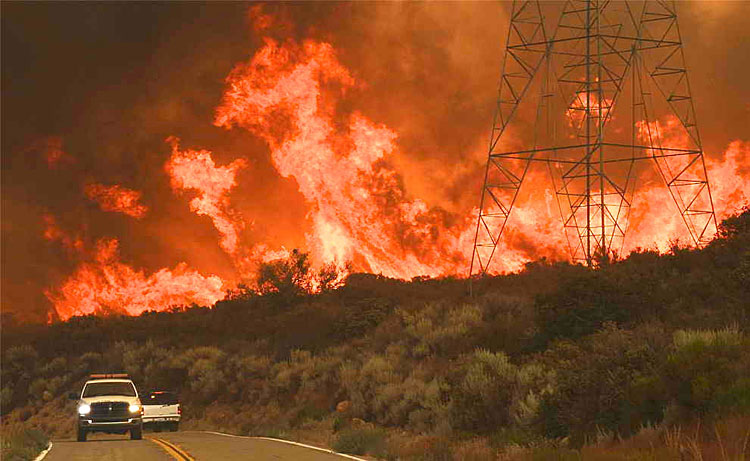It’s the 4th Quarter and We Have the Lead. Let’s Finish Strong!
By Ryan Peters, Fire Captain, Aptos-La Selva Fire District

Off shore wind events, dry fuels, and low relative humidities are locally common this time of year. In recent years past here in California, we’ve witnessed critical fire weather and red flag warnings lasting into the early part of the winter season. Up until the Mendocino Complex Fire this Summer, last year’s Thomas Fire was the largest wild land fire in California history which, you may recall, occurred in December!
So much of what we do in the Fire Service is about effective planning, setting objectives and goals, and working with you to make sure our community is safe and prepared. Without a working relationship with the public, the Fire Service will not be effective in mitigation efforts nor will the community be properly prepared for the risk of fire.
Our crews, you and your family, and your neighbors can partner to tackle the following issues to assure our community is taking the steps to mitigate the risk of Fall wild land fire. Preparation is the name of the game!
First, consider teaming up with your neighbors and homeowner associations to identify areas of risk within your neighborhood. Having defensible space between dry fuels and your home is key. Ensuring clearance of private roads and driveways is critical for Fire Service vehicles to make access to homes during a wild land fire event.
In 2005, California State law mandated that homeowners maintain 100‘ of defensible space around their homes. Begin by taking this 100’ and divide it into two separate zones. A 30‘ foot zone closest to your home, and a second 70‘ zone outside of that first zone. Inside that first 30’, the fuel management should be “lean, green, and clean.” There should be no weeds, or dry fuels in this area. Landscaped, fire resistive plants and certain types of trees are acceptable as long as they are properly limbed and maintaining a fire safe distance. Pine needles and dry leaves should be cleared from decks, roofs, eaves, and rain gutters.
The second outer zone should extend 70‘ (or to your property line) and should focus on the clearance of all light, flashy fuel types. Maintained landscaping and trees are ok. Weed whip all light fuels to approximately 4” in height. Be careful not to disturb root systems as this will help prevent mudslides and slip outs once the rainy season returns.
If your property is set on a hillside, elect to manage all fuels downhill of your home first. Fire burns more quickly and intensely as it moves uphill. Make downhill fuels your top priority.
Our fire crews are all about your safety. We ask that everyone post highly visible address numbers (at least 4” in height) on a contrasting background. This helps us locate you faster and get to work more quickly in a dynamic fire event. There are many driveways in our area that are well over 100’ in length. Please make sure that these long driveways are vertically cleared to at least 15’. This allows us to get our fire engines and vehicles up to your home safely and efficiently.
In areas where water supply is limited, homeowners who have access to rural water supplies can help the Fire Service by making sure there is adequate access to tanks and proper hook ups for vehicles to utilize water as needed. Fire Service resources assigned to firefighting duties in our rural areas are going to need easy access to water in order to defend structures and property.
Even though the community has done a tremendous job in mitigation efforts this fire season, the game isn’t over yet. While it is late in the game, and while fall rains may be around the corner, we should commit to finishing the 2018 fire season off on the strongest and safest note possible.
•••
For more information on fall fire safety or any other community safety concerns, citizens are welcome to view our website at www.aptosfire.com or stop by one of our three fire stations. Our on duty crews are always happy to help answer your questions!